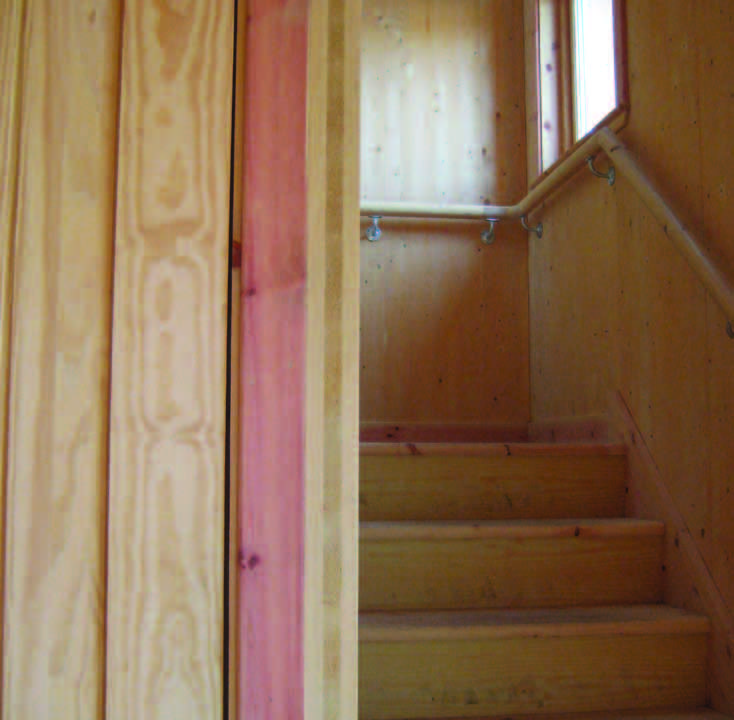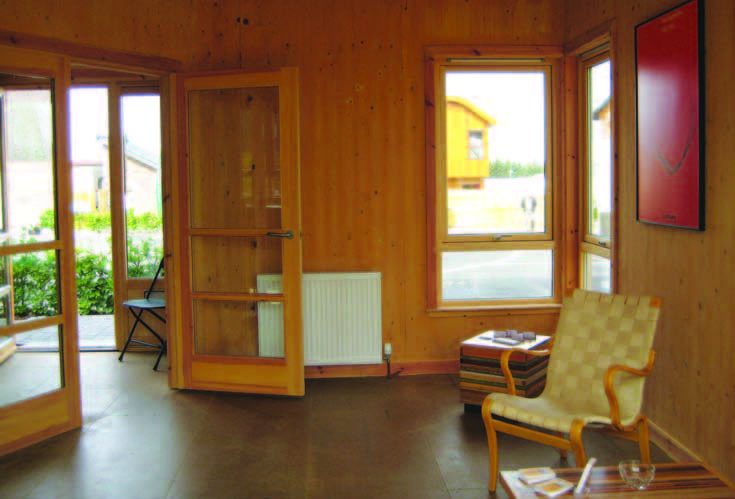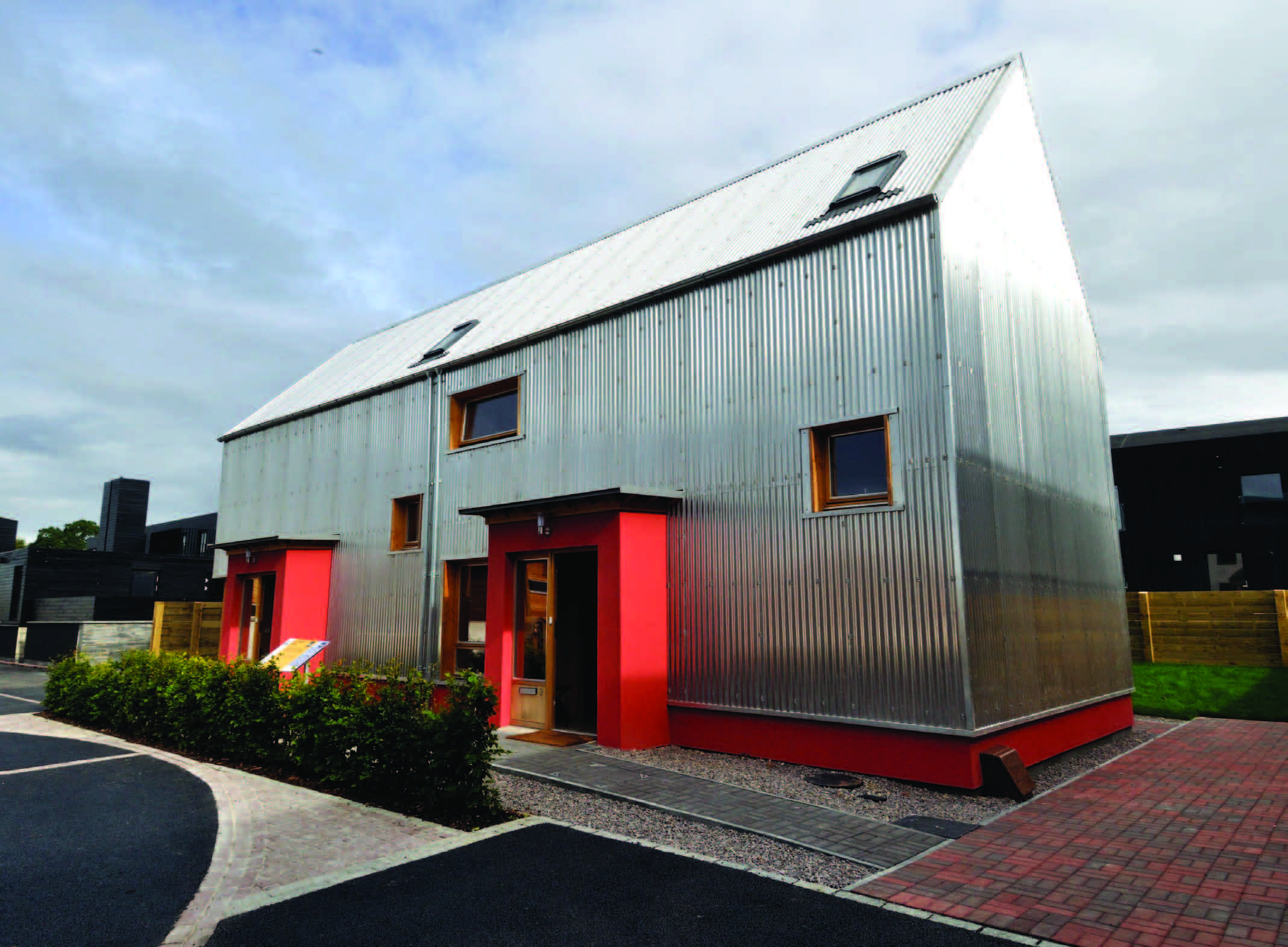This home is a contemporary reworking of the Highland vernacular, constructed with energy-efficient cross-laminated timber, and sheathed in profiled metal cladding. High thermal mass retains heat, and it is entirely breathable, creating a healthy low allergen, low-carbon home.
Timber technologies
The house is constructed from 95mm-thick cross-laminated timber panels made of spruce and pine laid across one another and bonded together to form a very strong unit. These are prefabricated in Sweden.
The panels are formed from five layers of timber strips of varying thickness glued together in alternating directions in a sandwich. Varying the thickness of the timber strips allows the most efficient use of the tree. The panels are structural and closely jointed. They are exposed internally, allowing the airtightness of the main joints of the building to be visually checked.
Air tightness is important to eliminate the draughts and cold spots common in traditional buildings. Openings for windows and doors are pre-formed. The first floor is solid cross-laminated structural timber, 163mm thick. The roof is also formed from prefabricated panels, but these are filled with insulation made from recycled paper.
When the panels arrive on site, the house walls up to roof level can be erected in a matter of days. This is thanks to the large, prefabricated parts and simple construction. The panels are tongued and grooved and bolted together at the corners.
Wiring is dropped down small voids formed in the panel joints, allowing the exposed face of the timber to form an uninterrupted finished face for the internal walls and ceiling. 200mm of hemp insulation is fixed to the outer face of the timber, and this is clad in profiled aluminium sheet to keep the structure dry.

Special timber-related features
Cross-laminated timber construction makes for an attractive, healthy, easy-to-heat home. The predicted annual running cost for heating for the house could be as little as £73 per year.
The solid timber walls are good at retaining heat, and timber is warm to the touch, making the internal environment of the house very comfortable for the occupants. The timber also allows moisture vapour to naturally escape through the walls. This reduces the likelihood of poor internal air quality, which is a contributing factor to diseases like asthma.

A library of sustainable building materials
Our website includes a web-based resource that showcases sustainable, traditional, innovative, recycled and low carbon building materials. If you are looking for inspiration or information on different types of materials to consider for your project, visit our materials library.

